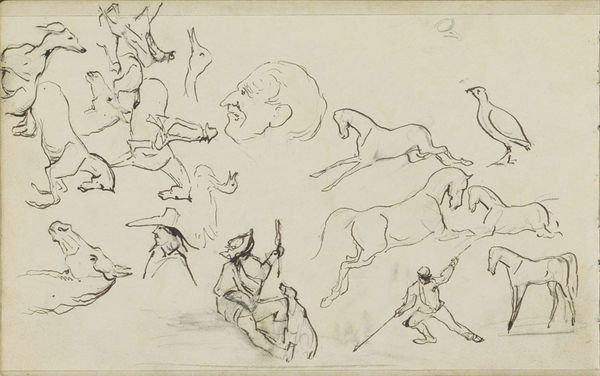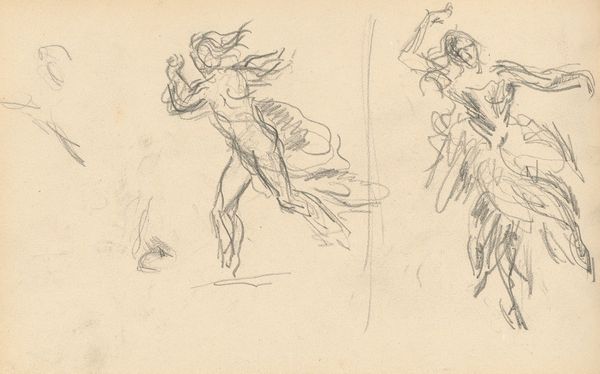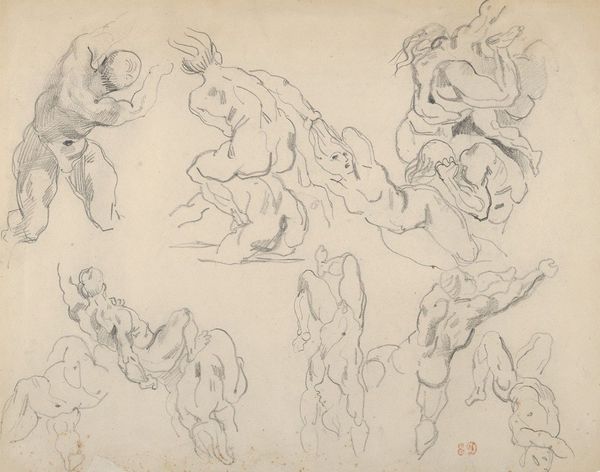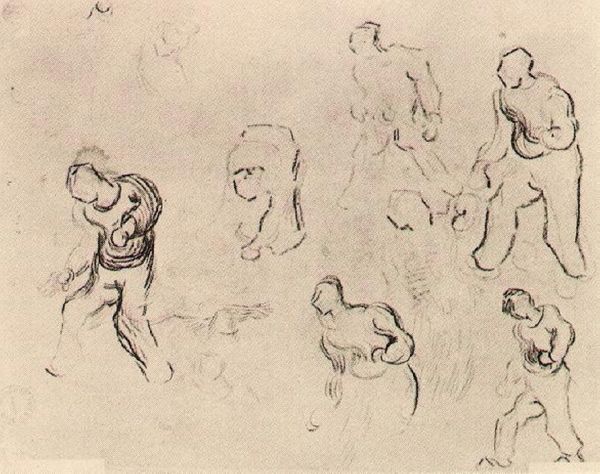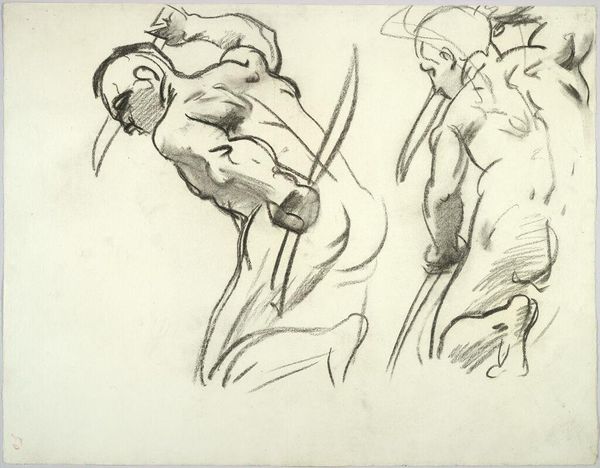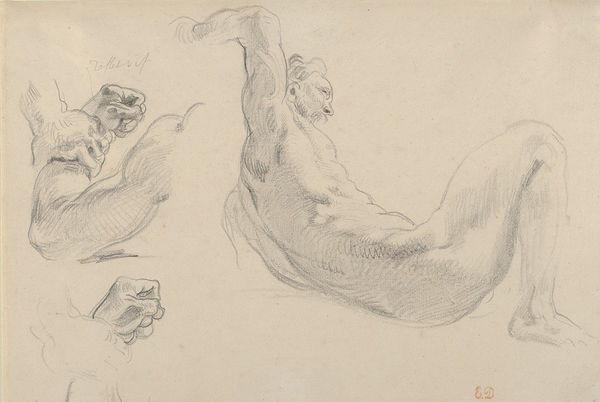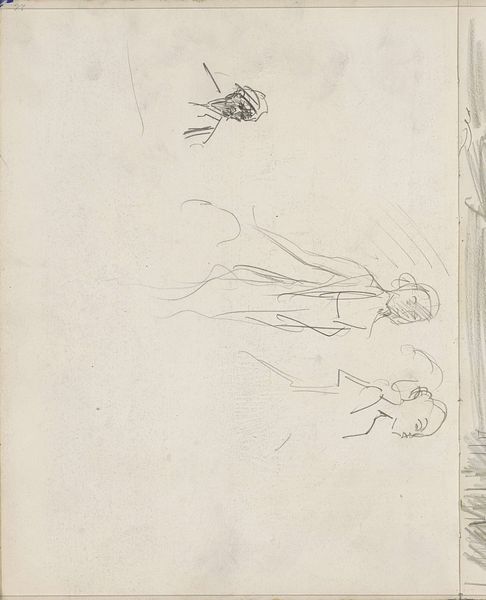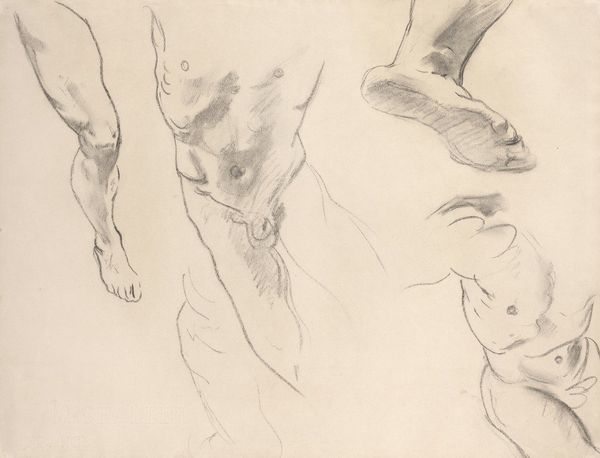
Studies of Hands and Figures for the Salon du Roi, Palais Bourbon 1833 - 1838
0:00
0:00
drawing, pencil
#
portrait
#
drawing
#
pencil sketch
#
figuration
#
pencil
#
academic-art
Copyright: Public Domain: Artvee
Curator: Looking at this drawing by Eugène Delacroix, "Studies of Hands and Figures for the Salon du Roi, Palais Bourbon," created between 1833 and 1838, I immediately notice the preliminary nature of the work. It feels like a glimpse into the artist's process. Editor: Yes, a snapshot of Delacroix's investigation. Note how he uses these rapid pencil lines to define form. It’s not about a finished representation but about grasping volume, tension, the very essence of these gestures and poses. The hands, especially, are so expressive even in their unfinished state. Curator: Exactly. Consider the historical moment and Delacroix's position. Commissioned for the Salon du Roi, a space steeped in power and patriarchal structure. These studies, these figures... what narratives are they participating in, what histories do they carry? Whose stories get told within those halls, and who is left outside? Editor: I'm more struck by how Delacroix uses hatching to create a sense of depth and movement. The interplay of light and shadow on the figures imbues them with a vitality that belies their sketched nature. Curator: The composition reveals much. Look at how the studies of hands – typically symbols of action and agency – are prominently displayed. Are they reaching, commanding, or perhaps pleading? How do those actions complicate the narratives of power within the Salon du Roi? Editor: But also consider the negative space! See how the artist uses it to isolate and emphasize certain anatomical details, directing our gaze. Curator: It begs us to interrogate representation. What kind of bodies are deemed worthy of monumentalization within these institutions? Delacroix's figures, in their incompleteness, become poignant reminders of the gaps and erasures within dominant historical narratives. Editor: Yes, but it is the artist’s mastery, this manipulation of line, of light and shadow, that allows Delacroix to communicate beyond pure representational realism. Curator: Well, these rapid, fragmented studies encourage us to consider the social function of art within sites of power and to be more aware of art’s ability to critique historical injustices. Editor: Agreed. Looking at Delacroix's draftsmanship, this drawing speaks volumes about the artistic mind. Curator: Definitely a point of access when understanding institutional spaces!
Comments
No comments
Be the first to comment and join the conversation on the ultimate creative platform.
